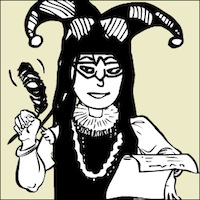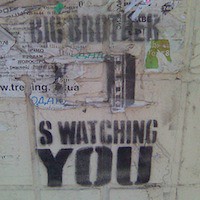Halloween Traditions and Their Origins

Most people know that the holidays that we celebrate as religious are steeped in ancient Celtic or pagan roots. The same goes for Halloween, which was originally known as the Samhain festival.
Samhain (pronounced “sah-ween”) was a festival to celebrate the Celtic new year, which begins on November 1. It is a festival to celebrate the beginning of winter and the time for livestock to be brought in from the fields. The day before was thought to be when the land of the dead and the land of the living overlapped and the dead walked the earth, causing sickness and crop destruction. So, rather than get into the history too much, let’s see how the day we celebrate as Halloween and its traditions have come about from the festival of Samhain.
Trick or treat
This tradition, as you know, is when children come to your house dressed in costumes, ring your doorbell and say, “Trick or treat!” in the hopes of getting some candy or other treat. If the homeowners do not give any treats, then a trick is played on them or their property. This comes from the part of the Samhain festival where masks and costumes were worn to appease the evil spirits, and treats such as cakes and fruits were left outside to feed the evil forces. If no food was left outside, the evil forces invaded the homes or destroyed the farmer’s crops.
Bats
During the Celtic festival, bonfires were lit in an attempt to keep the dead and the spirits away from the living and the crops. In turn, these fires drew insects such as mosquitoes and moths. These insects drew bats to the bonfire which ate the insects. Hence the association of bats with Halloween.
Jack-o’-lantern
There are many variations of this story. One of my favorites is that a ne’er-do-well named Jack had stolen things from the villagers. The villagers chased Jack until he came face to face with the devil. The devil told him it was time for him to die, and the devil would take his soul to hell. However, Jack tricked the devil by telling him that he could bedevil the souls of the Christian villagers who were chasing him. Jack told the devil to transform into a coin that he would use to pay the villagers for the stolen items. Believing this was a good idea, the devil transformed into a coin and hopped into Jack’s wallet. However, Jack also had a cross in his wallet and the devil was trapped in there by the cross, which took away his powers. Jack promised to free the devil only if he agreed never to take Jack’s soul. The devil promised, and Jack freed him.
Eventually, Jack died, and although the devil could not take his soul to hell, Jack was too evil to go to heaven. With nowhere for his soul to go, he was doomed to wander the earth forever. He asked how he would be able to see to go anywhere. Mockingly, the devil tossed him a burning ember from the flames of hell that would never burn out. So Jack carved out a turnip and placed the ember inside, and used it as a lantern. He would soon become to be known as Jack of the Lantern or jack-o’-lantern.
So there you have it. These are just some of the reasons that certain symbols and traditions have become associated with Halloween.
Samhain (pronounced “sah-ween”) was a festival to celebrate the Celtic new year, which begins on November 1. It is a festival to celebrate the beginning of winter and the time for livestock to be brought in from the fields. The day before was thought to be when the land of the dead and the land of the living overlapped and the dead walked the earth, causing sickness and crop destruction. So, rather than get into the history too much, let’s see how the day we celebrate as Halloween and its traditions have come about from the festival of Samhain.
Trick or treat
This tradition, as you know, is when children come to your house dressed in costumes, ring your doorbell and say, “Trick or treat!” in the hopes of getting some candy or other treat. If the homeowners do not give any treats, then a trick is played on them or their property. This comes from the part of the Samhain festival where masks and costumes were worn to appease the evil spirits, and treats such as cakes and fruits were left outside to feed the evil forces. If no food was left outside, the evil forces invaded the homes or destroyed the farmer’s crops.
Bats
During the Celtic festival, bonfires were lit in an attempt to keep the dead and the spirits away from the living and the crops. In turn, these fires drew insects such as mosquitoes and moths. These insects drew bats to the bonfire which ate the insects. Hence the association of bats with Halloween.
Jack-o’-lantern
There are many variations of this story. One of my favorites is that a ne’er-do-well named Jack had stolen things from the villagers. The villagers chased Jack until he came face to face with the devil. The devil told him it was time for him to die, and the devil would take his soul to hell. However, Jack tricked the devil by telling him that he could bedevil the souls of the Christian villagers who were chasing him. Jack told the devil to transform into a coin that he would use to pay the villagers for the stolen items. Believing this was a good idea, the devil transformed into a coin and hopped into Jack’s wallet. However, Jack also had a cross in his wallet and the devil was trapped in there by the cross, which took away his powers. Jack promised to free the devil only if he agreed never to take Jack’s soul. The devil promised, and Jack freed him.
Eventually, Jack died, and although the devil could not take his soul to hell, Jack was too evil to go to heaven. With nowhere for his soul to go, he was doomed to wander the earth forever. He asked how he would be able to see to go anywhere. Mockingly, the devil tossed him a burning ember from the flames of hell that would never burn out. So Jack carved out a turnip and placed the ember inside, and used it as a lantern. He would soon become to be known as Jack of the Lantern or jack-o’-lantern.
So there you have it. These are just some of the reasons that certain symbols and traditions have become associated with Halloween.
You Should Also Read:
Irish Halloween or Samhain
Halloween and Horror
Bake a Creamy Jack-O-Lantern Cheesecake!

Related Articles
Editor's Picks Articles
Top Ten Articles
Previous Features
Site Map
Content copyright © 2023 by Vance R. Rowe. All rights reserved.
This content was written by Vance R. Rowe. If you wish to use this content in any manner, you need written permission. Contact Lane Graciano for details.







